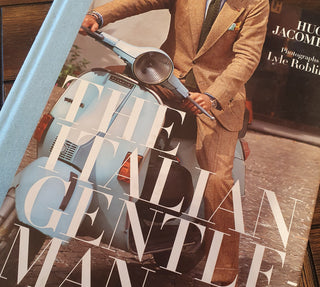In 1952 at Palazzo Pitti in Florence, Italian fashion designers showcased a less formal style of tailoring that European men embraced – the Italian cut suit.
Over the years the Italian suit evolved in many styles, with the three most common being Romano, Neapolitan, and Milanese. The commonalities that define an Italian suit are a natural silhouette with a tapered waist, High Gorge lapel, no vents, and a more relaxed fit.

The Naples cut uses two types of shoulders: Spalla Camicia” and Con Rollino. Spalla Camicia translates to like a shirt and has a natural shoulder with little or no padding. Rollino or “little roll” is a shoulder that is built up at end to provide more height and a pagoda style shoulder line.
The Romano shoulder is the more structured style, with padding and a shoulder line that sits evenly with the trapezoid. Both Romano and Neapolitan tailoring houses make use of a curved breast pocket called a “barchetta”, - little boat.
The Milanese style is closest to the British in that it uses more structure with use of canvasing, horsehair and padding at the shoulder. It offers more freedom of movement than the British thanks to its higher armhole and has a more natural shoulder line.
You can’t deny that Italian tailoring is a personality in its own right. To the rakish, nonchalant stylish gentleman. How very sprezzatura… which is the art of looking great without fussiness.

